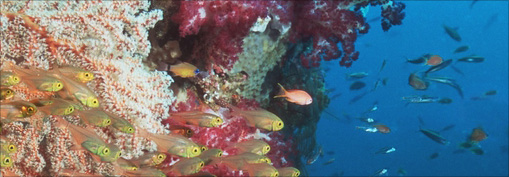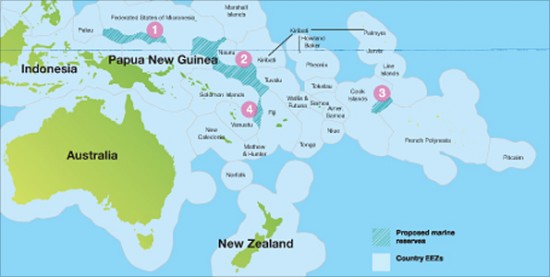By Richard Black | Tuesday, 19 October 2010
From the UN Convention on Biological Diversity meeting in Nagoya, Japan:
The oceans may cover three-quarters of the world's surface, but they make a tiny contribution towards the total extent of area that governments have put under protection in order to promote conservation.
Despite a number of internationally-agreed targets, only about 1% of the marine environment is protected at the moment.
Compared with the land-based figure - 13% and rising - it's a drop in the ocean.
Why this is, and what can be done about it, forms a large chunk of a report out here from some of the heavyweight bodies in the conservation field - The Nature Conservancy, the International Union for the Conservation of Nature, the UN Environment Programme, and others.
One of the obstacles that Francois Simard, one of the report's authors, flagged up is international law.
Basically, the high seas, outside countries' exclusive economic zones, are generally a free-for-all.
For everyone apart from those few powers with space programmes, the deep ocean is the final frontier - and the general approach down the years has been to catch as much as you can as soon as you can, before someone else gets there.
Is this sustainable? Francois and his fellows think not.
But if international law is the obstacle, then how can it be overcome?
If the open oceans belong to everyone, how can they be regulated without universal approval - which seems to be politically impossible?
I had a long chat with Duncan Currie, a lawyer with an encyclopaedic knowledge of international environmental law who's here with the Pew Environment Group watching what government delegates have to say about marine conservation as they discuss various proposed refinements to the CBD.
Well, yes, the UN Law of the Sea Convention does present obstacles. But Duncan gave me a few intriguing examples of how clever use of law - and politics - is getting around that problem.
Firstly - as I've noted before - there are, especially in the Pacific, a number of countries that in a sense are tailor-made for marine conservation, consisting of sparsely-populated archipelagos spread over huge tracts of ocean.
If one country implements a protected area - as Palau did last year to combat shark-fishing - that's an awful lot of water put under protection (always presuming the resources are there to enforce it).
If a number of neighbouring countries take action together, the result is amplified beyond arithmetic.
Enter, then, the Nauru Agreement. Here we have a number of Pacific states deciding, in concert, to regulate fishing not only in their territorial waters but in the waters in between.
As Duncan outlined, this is fairly straightforward in essence. Countries with big fishing fleets want rights to fish in the territorial waters of Micronesia, say, or Kiribati, and need a licence from that government to do so.
What the Parties to the Nauru Agreement decided was that if the EU or Japan wanted to catch lucrative tuna in their territorial waters, they had to pledge not to fish in the areas in between.
And it's working; these areas of international waters are now under, or are coming under, protection. The countries, of course, are making more money that way too from licences.
Parts of the North Atlantic - the Charlie Gibbs Fracture Zone - have also been protected, through the Ospar Commission.
A region in the middle of the ocean where in the past fleets "exploited all and depleted some of the predominant seamount-aggregating populations of demersal deepwater fish (roundnose grenadier, redfish, orange roughy, sharks)" is now, in principle, safe from further exploitation and depletion.
Lastly, there are the resolutions regulating bottom-trawling (the kind of fishing that depleted the Charlie Gibbs region) that have gone through UN General Assemblies in recent years.
They don't stop bottom-trawling; but they do strongly request governments to make sure the likely environmental impact is assessed before fishermen begin on a particular stretch of seabed, and to make sure fleets desist if that impact looks like being significant.
With all that, though, it looks as though a lot more clever lawyering will be needed if the internationally-agreed target of 10% is to be reached any time soon - let alone the higher figures of 20% or 30% that according to some conservationists would be in the long-term interests of fishermen themselves.
The new report - Global Ocean Protection: Present Status and Future Possibilities - cites data showing that at present rates, it'll take until 2080 to reach 10%.



Comments